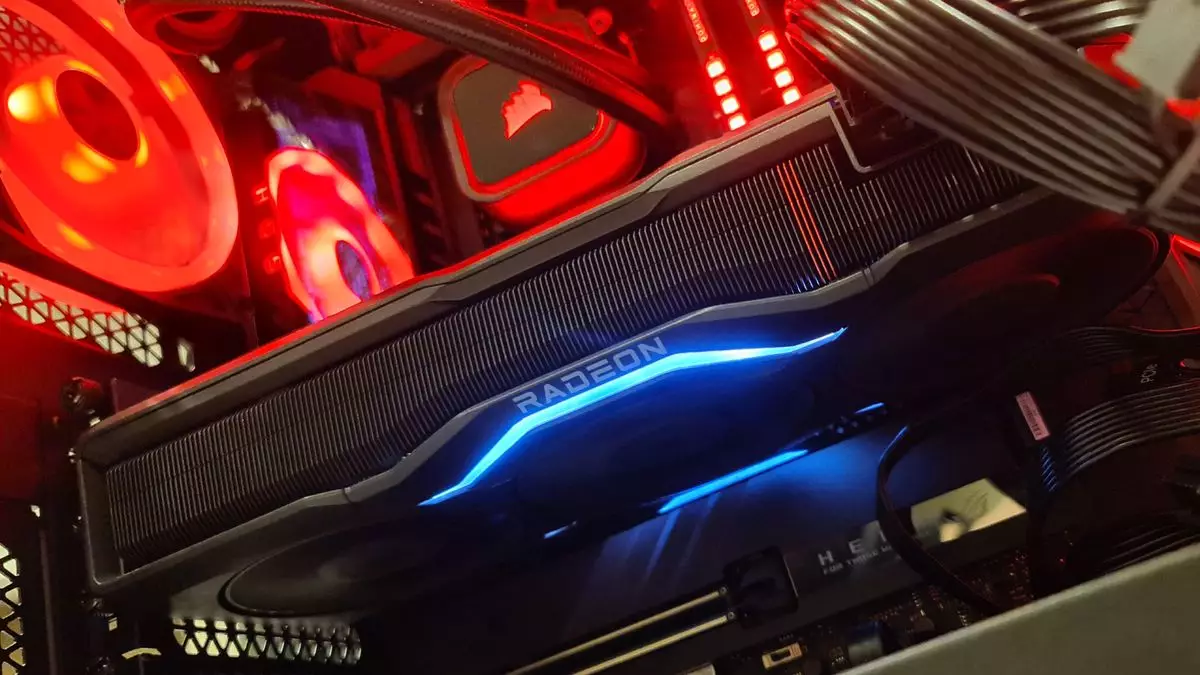With the imminent arrival of cutting-edge graphics cards like Nvidia’s GeForce RTX 50-series and AMD’s Radeon RX 8000-series, many gamers might overlook the critical role that graphics software plays in optimizing performance. The latest update from AMD, the Adrenalin 24.9.1 driver, brings to light significant advancements in graphics software, particularly through the introduction of the second generation of their Fluid Motion Frames technology, or AFMF 2.
The Significance of Frame Generation Technology
Frame generation technology has emerged as a crucial tool for enhancing gaming experiences across various platforms. For AMD, the development of AFMF 2 signifies a serious commitment to offering gamers improved performance metrics without requiring intensive game-specific optimizations. Unlike Nvidia’s offerings, such as DLSS, AFMF allows for a more versatile application across a wide array of games. Toggling this technology within the Adrenalin software provides a degree of flexibility that can be highly beneficial, especially for gamers who rely on varying hardware capabilities.
AFMF 2 claims to boost gaming performance by an impressive factor of 2.5x, although such figures merit close scrutiny. It’s essential to differentiate between the benefits of AFMF and the collective advantages presented by HYPR-RX and FSR 2, both of which were instrumental in achieving these reported gains. Yet it does illustrate AMD’s effort to create a more seamless and enriched gaming environment.
The transition from AFMF to AFMF 2 brings with it several enhancements aimed at refining the player’s experience. AMD has touted that the new generation of this technology introduces AI-optimized advancements for enhanced quality and performance, even offering lower latency—a critical aspect in fast-paced gaming scenarios. Such improvements could result in smoother gameplay, especially when integrated graphics are at play.
However, it’s important to temper expectations. Preliminary tests, conducted by various experts, indicate that while AFMF 2 performs better than its predecessor, it might not revolutionize gaming as AMD may suggest. Previous analyses identified a modest increase in frame rates, with AFMF 2 demonstrating an edge in latency handling and the capacity to manage fast motions more efficiently. Thus, while AFMF 2 may provide an improved experience, calling it a “game-changer” could be premature.
One of the more impressive aspects of AFMF 2 is its compatibility with existing technologies in the AMD ecosystem. The capability of AFMF 2 to work alongside features such as Radeon Chill and the support for Vulkan and OpenGL games broadens its applicability. Gamers utilizing the Radeon 7000 series can find AFMF 2 settings through the HYPR-RX profile, while users of the 6000 series can access it via the graphics options within Adrenalin. This level of integration reinforces AMD’s objective of maximizing the utility of its graphics cards across varying series and types.
Moreover, AMD’s introduction of Geometric Downscaling within the Adrenalin 24.9.1 driver underlines the company’s push for visual fidelity. This feature addresses visual artifacts and aliasing in windowed videos that are rendered at resolutions lower than their native quality. This addition shows AMD’s understanding that gamers not only seek high frame rates but also appreciate video quality that does not detract from their immersive experience.
As handheld gaming PCs gain popularity, the demand for robust graphics performance is on the rise. Many of these devices come equipped with AMD Radeon GPUs, creating a significant market for utilities like AFMF 2. With the gaming community continually seeking enhancements that can keep up with their demands for quality and responsiveness, the timing of this update could not be better.
For all the advancements AMD continues to make, it seems essential to acknowledge the potential gap between expectation and reality regarding product promises. AFMF 2, while offering some enhancements, must be viewed as part of a larger ecosystem—one that includes various optimizations and capabilities. As gamers gear up for the latest hardware releases, it will be interesting to observe how these software improvements play into their overall gaming experiences.
AMD’s Adrenalin 24.9.1 driver and its introduction of AFMF 2 present a promising step forward, but users should maintain realistic expectations regarding the actual performance improvements. Exciting times lie ahead for gamers as they navigate the developing landscape of graphics technology.

